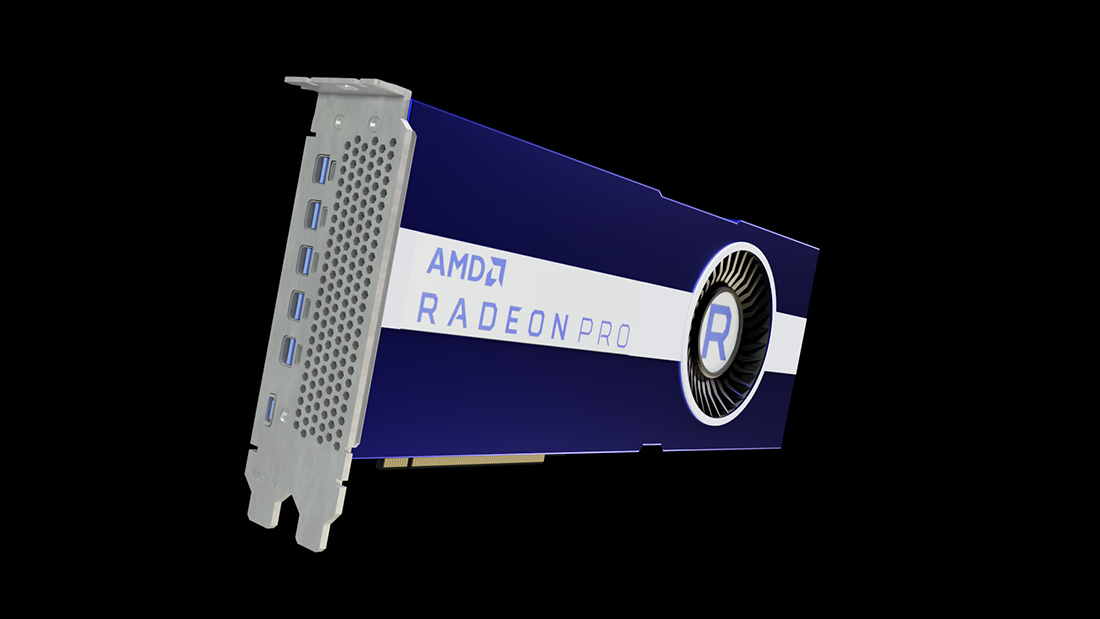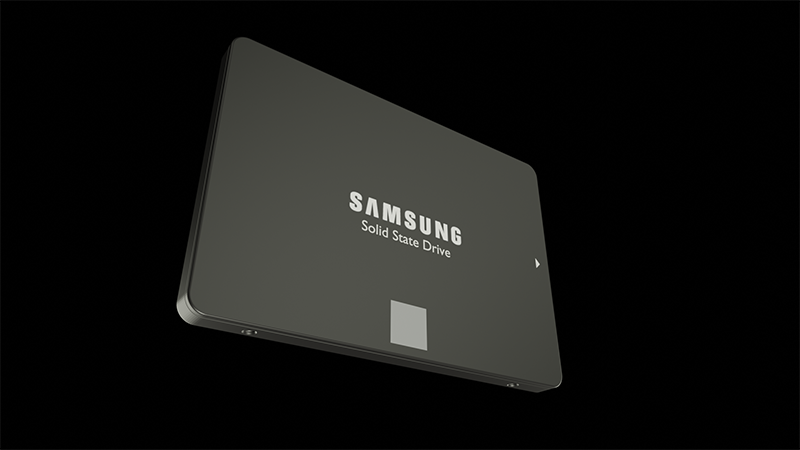Software
Blender 2.93
Adobe Photoshop 2021
HandBrake 1.3.3
1.1 Concept
The brief: Create an engaging experience through the development of an interactive exhibit that adds to the understanding of visitors to the Transmedia End of Year Exhibition. As part of a small team our aim was to produce a virtual exposition stand that aids technophobes and PC enthusiasts alike to gain hardware knowledge and serves as a guid when building a computer. My main responsibility was to model computer parts such as the case, GPU, SSD, radiator, fans and the RAM. Although most concepts were already familiar however I gained more in-depth knowledge in Scene Lighting, Texturing and Rendering.
1.2 Research
My research consisted of three main elements. The initial Concept Research phase was carried out during week seven what the market research followed in week eight. During this phase I developed three personas and dived into the world and the UK gaming market statistics.(1.2.1) Product Research which lasted for the entirity of the project I focused on dimensional accuracy, 3D printing requirements and material and colour scheme development. For all beauty modells with the exception of the case, their real life equivalents served as references. A gamer theme was implemented as our research indicated that PC game enthusiast would represent a substantial percentage of our possible customers.
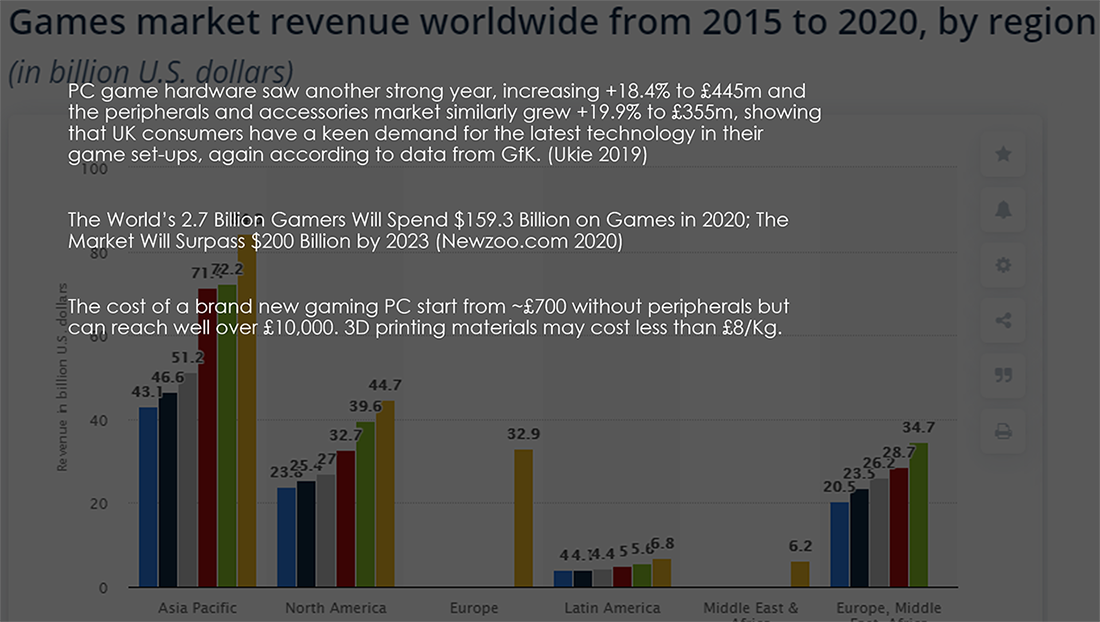
1.2.1 image sourced from statista.com
1.3 Structuring
1.4 Modelling
1.5 Texturing
1.6 Lighting Effects
1.7 Colours and Rendering
1.8 3D Printing Standards
In order to adhere 3D printing guidelines all models had a somewhat simplistic replica. These were made to the same 1:1 scale as their hero counterparts however just as with the industry standard LOD system the poly count was drastically reduced for keeping file size to a minimum. All models are free of holes and represent non-manifold geometry to prevent issues with slicing software.(1.8.1) All files were exported as .stl extensions for direct printing.
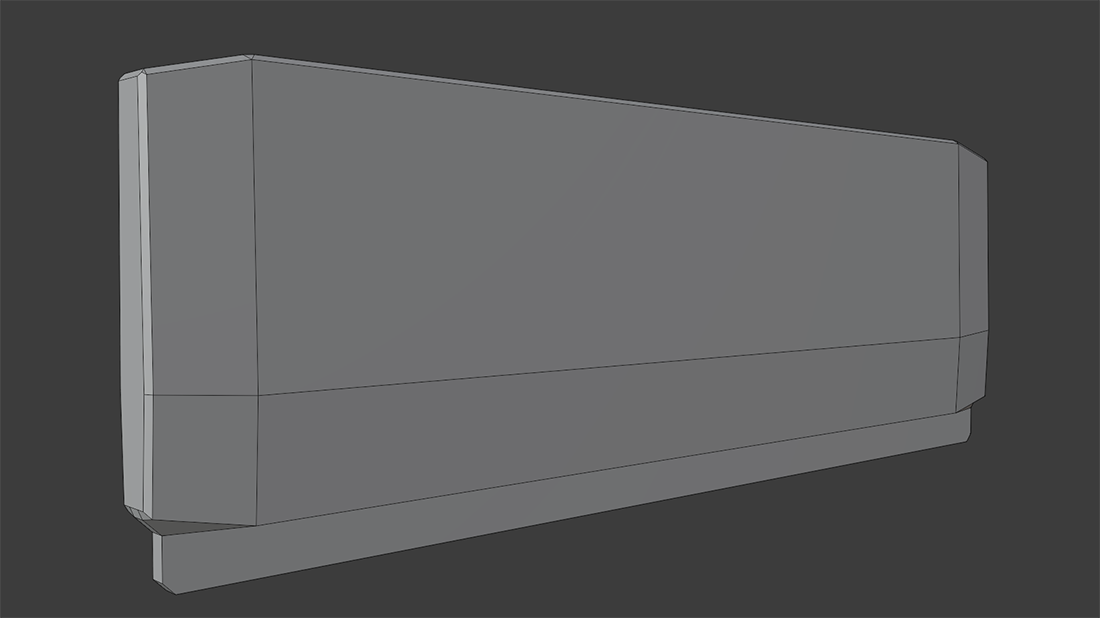
1.8.1
1.9 Project Timeline
The Interactive Project spanned through seven weeks during the second semester. The below gantt chart shows the entire project pipeline in weekly interval breakdown.(1.9.1) Beside displaying the main deadlines and meetings each colour symbolizes a subsequent pathway and its representative such as Design/Ethan Gunn, Development/Jamie Joyce, 3D Environments Luke Raynsford and Roland Bako from the Digital Media Development Department.
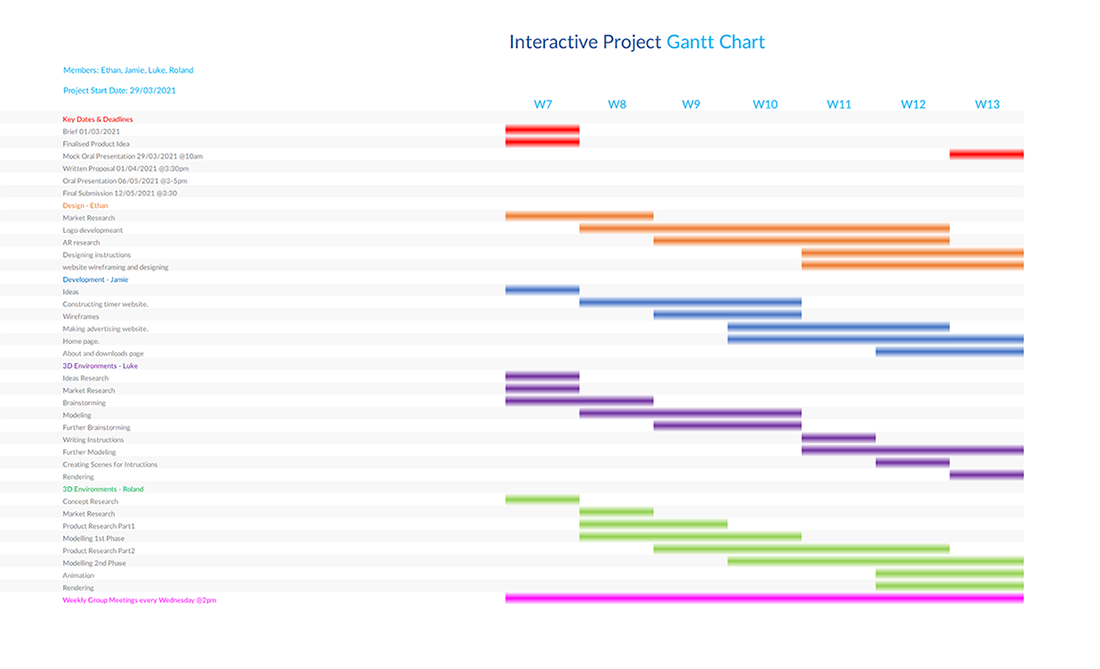
1.9.1
2.0 Conclusion
As with all other assignments throughout year one the Interactive Project presented challenges at times but also enjoyment. My aim was to showcase a gamer theme through my models. I tried and experimented with numerous techniques mainly within Blender but also in Adobe Photoshop and also got acquainted with HandBrake. I gained invaluable experience in modelling, scene lighting, rendering, texturing and the node network in the Shading interface. In the near future I am planning to modell the remaining components of a computer to make a small animation depicting a gamer setup.
